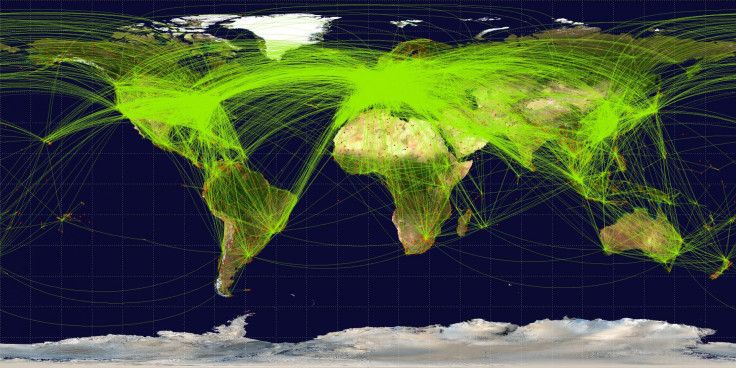Etihad CEO: The Global Air Travel Map Must Change

Legacy airlines need to make radical changes to the global air travel map if they want to remain viable in the coming years, according to Etihad Airways’ president and CEO, James Hogan.
Speaking at the World Travel and Tourism Council Global Summit in Abu Dhabi, Hogan told a crowd of more than 800 senior travel executives that legacy airlines could not progress unless they completely rethink the way they do business.
“Airlines across the world need to adapt to ‘the new world’ and identify and tap into growth markets,” he said. “The industry must source and train staff for this new growth, as well as explore cost-effective growth opportunities.”
Hogan noted the rapid rise of air travel in markets like India, Africa and the Middle East, which he believes necessitate major changes in airline networks to accommodate changing traffic flows.
Airlines today operate on a system of “hubs and spokes” that link the world together. However, travelers from many emerging markets have trouble flying from point A to point B without first connecting in far away hubs in Europe, North America or East Asia. A traveler from one African capital, for example, may have to fly through a European hub to reach another African city.
As traditional markets decline and new markets evolve, traditional airlines will not grow unless they reshape their networks to accommodate changing conditions, Hogan believes.
To participate in the “new world of air travel,” he said, the next generation of airlines would need “the vision and willingness to be different” to cut costs, improve productivity and find affordable ways of accessing new markets.
According to a report from the International Air Transport Association, or IATA, emerging markets represented the strongest growth in international passenger demand in 2012.
While North America had the slowest international passenger growth of any region at 1.3 percent, the Middle East represented the fastest with 15.4 percent. Latin America and Africa were not far behind with 8.4 percent and 7.5 percent growth, respectively.
“Passenger demand grew strongly in 2012 despite the economic bad news that dominated much of the last 12 months,” IATA Director General and CEO Tony Tyler noted. “This demonstrates just how integral global air travel is for today’s connected world.”
The IATA report said airlines and airports were not keeping pace with growing demand. It added, however, that carriers in the Middle East “increased the connectivity of their expanding hubs with significant increases in both network and frequency.”
According to Airports Council International, Dubai has now surpassed Hong Kong as the second busiest airport in the world for passenger traffic. It also holds the title of fastest growing airport, according to aviation intelligence company OAG.
Fueled by travelers from emerging countries, the United Nations World Tourism Organization, or Unwto, expects international tourist arrivals to increase an average of 3.8 percent each year through 2020, with Africa (including the Middle East) and Asia Pacific leading the way.
Indeed, by 2015, Unwto predicts half of the world’s international travelers will come from emerging countries.
Given these statistics, airlines may be wise to heed Hogan’s advice and adapt their networks to the change.
© Copyright IBTimes 2025. All rights reserved.






















